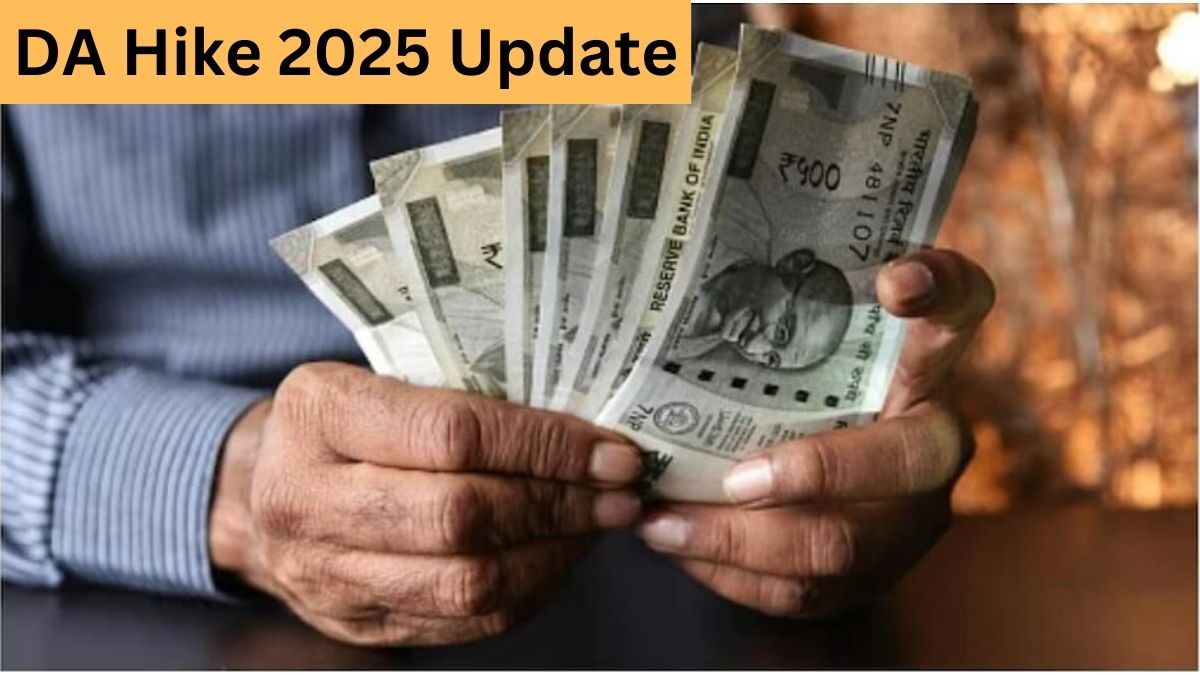The Dearness Allowance (DA) and Dearness Relief (DR) for central government employees and pensioners are revised twice a year under the 7th Pay Commission. The adjustments are usually made in January and July, aiming to compensate employees for the rising cost of living. However, the upcoming DA hike for the January-June 2025 cycle is expected to be the lowest in seven years, projected at just 2%.
This article will provide an in-depth analysis of the proposed DA hike, the factors influencing the decision, and its potential implications for employees and pensioners.

Why the DA Hike Is Expected to Be Minimal
The anticipated 2% DA increase is considerably lower than the usual 3% to 4% hikes that have been implemented since July 2018.
Factors Behind the Low Hike
- All India Consumer Price Index (AICPI):
The AICPI is a crucial factor in determining DA rates. Moderate inflation levels reflected in recent data suggest a smaller DA increment. - Economic Conditions:
The government is adopting a cautious approach due to the current economic situation, aiming to balance fiscal responsibility with employee welfare. - 7th Pay Commission Adjustments:
The 7th Pay Commission, implemented in January 2016, initially merged a 125% DA from the previous pay panel with the basic pay, setting a standard for future revisions.
Historical DA Hikes Under the 7th Pay Commission
Since its implementation in 2016, the 7th Pay Commission has periodically revised DA rates. However, there was an exception between January 2020 and June 2021, when DA hikes were suspended due to economic challenges.
| Revision Period | Previous DA Rate | New DA Rate | Increase (%) | Effective Date |
|---|---|---|---|---|
| January – June 2024 | 46% | 50% | 4% | March 25, 2024 |
| July – December 2024 | 50% | 53% | 3% | October 16, 2024 |
| January – June 2025 | 53% | 55% (Expected) | 2% | March 2025 (Retroactively) |
The projected 2% hike will be the lowest increase since July 2018, marking a significant departure from the usual pattern of 3% to 4% adjustments.
Implementation Timeline and Arrears
The Union Cabinet is expected to finalize the DA hike decision soon. Once approved, the increase will be applied retrospectively from January 1, 2025.
This means that:
- Employees will receive their revised salaries for March 2025.
- Arrears for January and February 2025 will be included in the March payment.
Impact of the Proposed DA Hike
The modest 2% increase in DA will have a noticeable impact on central government employees and pensioners, particularly those with lower basic salaries.
| Basic Salary (₹) | Current DA (53%) (₹) | New DA (55%) (₹) | Monthly Increase (₹) |
|---|---|---|---|
| 18,000 | 9,540 | 9,900 | 360 |
| 25,000 | 13,250 | 13,750 | 500 |
| 50,000 | 26,500 | 27,500 | 1,000 |
This moderate increase will also affect pensioners, whose income relies heavily on DA adjustments to maintain purchasing power.
Upcoming 8th Pay Commission and Its Impact
The 8th Pay Commission, announced on January 16, 2025, is scheduled to take effect from January 1, 2026. Its recommendations aim to overhaul the existing salary structures under the 7th Pay Commission.
Key Considerations:
- The 8th Pay Commission will likely introduce new rules for calculating DA and revising salary structures.
- The DA component will be merged with the basic salary, effectively resetting it to zero under the new framework.
- The final DA hike under the 7th Pay Commission is expected to occur around Diwali 2025, before the 8th Pay Commission’s implementation.
Why the 2% DA Hike Matters
Despite appearing minimal, the 2% increase can have significant financial implications for employees and pensioners. It reflects the government’s cautious approach to managing fiscal resources while acknowledging the need to support employees against rising inflation.
Additionally, the small hike has prompted concerns among employee unions and pensioner associations, who feel that the increase is inadequate to counterbalance the rising cost of living.
Comparison Between DA Hikes Over the Years
| Year | Increase (%) | Effective From | Economic Context |
|---|---|---|---|
| 2018 | 2% | July – December | Relatively low inflation |
| 2019 | 3% | January – June | Steady economic growth |
| 2020 – 2021 | Suspension | COVID-19 Pandemic | Financial Constraints |
| 2024 (July) | 3% | July – December | Post-Pandemic Recovery |
| 2025 (Expected) | 2% | January – June | Cautious fiscal approach |
Frequently Asked Questions
Q1: Why is the DA hike expected to be only 2% this time?
The low increase is due to moderate inflation rates reflected in the All India Consumer Price Index (AICPI) and the government’s conservative fiscal policies.
Q2: When will the new DA rate be implemented?
If approved, the new DA rate of 55% will be implemented retrospectively from January 1, 2025.
Q3: Will the DA hike apply to pensioners as well?
Yes, the Dearness Relief (DR) for pensioners will also be adjusted according to the revised rate.
Q4: How does the 8th Pay Commission affect the current DA hike?
The 8th Pay Commission will likely replace the 7th Pay Commission’s framework by January 2026, merging DA with the basic salary and creating a new calculation model.
Q5: What is the significance of the final DA hike under the 7th Pay Commission?
The final DA hike under the 7th Pay Commission is expected around Diwali 2025, which will be the last increment before the 8th Pay Commission’s implementation.
The 2% DA hike anticipated for the January-June 2025 cycle is a notable shift from previous trends. As the 8th Pay Commission approaches, employees and pensioners will need to carefully assess how these changes will impact their financial stability in the coming years.
Click here to know more.
Kishan is a knowledgeable writer specializing in agriculture and the latest government job recruitments, delivering clear and insightful content to inform and empower readers.